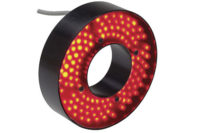
Here we contrinue with the second part of the Lighting Series. Read part onehere.
Neither last nor least, the output light intensities and intensity distributions from the two arms of the output fiber bundles were significantly different in this commercially purchased assembly, containing a tungsten-halogen light source, fiber-optic mounting fixtures and a power source. This can be due to alignment issues at the input and output ends, or variations along the length of the fibers.
Specifying that the optical fibers in the input and output bundles are randomly arranged takes care of these issues.
Thus, the same intensity time-fluctuations and the same spatial distributions are produced at both output bundles.
In short, it worked without much work!
In addition, specular (direct) reflections were avoided and there also were software recalibrations performed during on-line operations.
This is just a little of what is commonly mentioned as “lighting.”
Materials’ Optical Properties and Special Optical Techniques
Both materials’ optical characteristics and special optical techniques can greatly improve system performance. Using characteristics and techniques, separately or together, improves discrimination/contrast and eliminates background interferences. These are listed below.
Materials’ optical properties: 1. Geometric
2. Spectral
3. Polarization
4. Induced optical characteristics.
Special optical techniques:
1. optical spatial filtering
2. structured lighting
3. shaped and random fiber optic bundles
4. differential detection
5. wave front coding.
In future posts, I’ll delve into the above items in more detail. As always, comments, questions and suggestions are encouraged.
